September has come and gone, and some of us, including yours truly, are still trying to settle into a stricter routine. I don’t usually have trouble with self-discipline, and I say good riddance to summer, but early fall is a season filled with distractions.
If you’re looking for some inspiration to sit yourself down and set words to paper (or screen), these images of women authors at their writing desks (posed though they are) might just do the trick.
It helps to have “a room of one's own,” as Virginia Woolf famously put it, but a designated writing area with a desk and chair, attended to regularly, is a good way to develop discipline to write regularly. Meanwhile, enjoy these wonderful images of writers in their work spaces.
Gwendolyn Brooks used her poetic voice to spread tolerance and convey an understanding of the Black experience in America. A prolific writer, she produced hundreds of poems, had twenty books published during her lifetime, and was recognized and honored during her lifetime, being the first African-American to receive a Pulitzer Prize.
Daphne du Maurier did much of her earlier work on an American Oliver Model 11, now displayed in the museum at Jamaica Inn, and she’s depicted with it in a 1996 British postage stamp (see above right). Read more about the writing habits of du Maurier, best known for the haunting novel, Rebecca.
Simone de Beauvoir’s writings included novels, philosophy, and social theory. Her most popular work, The Second Sex, was published in 1949 and has made its mark as a feminist manifesto some years later, during the second wave.
When Edith Wharton’s first collection of short stories was published 1899, she was finally able to accept herself as a professional writer and not a dilettante. In her own eyes, she went from being “a drifting amateur in to a professional,” and, most importantly, “gained what I lacked most—self confidence.” She went on to write numerous other well-received works, and won the Pulitzer Prize for the Novel in 1921 for The Age of Innocence.
Sarah Orne Jewett was a respected author of 19th century New England whose work captured a sense of place and a vanishing way of life. Her best-known work is The Country of the Pointed Firs.
Carson McCullers is known primarily for her novels, especially her first,The Heart is a Lonely Hunter. She also wrote plays, short stories, poetry, and other works. Most of her works are set in the American South, people with characters struggling with loneliness and feelings of isolation. She was only 50 when she died, but left behind a significant and lasting body of work.
Dorothy Parker’s wide-ranging work included short stories and criticism (literary and theater), though she was best known for her tart, trenchant verse. She quipped, “I hate writing, I love having written.” Perhaps there were things she would have rather done than be chained to her desk, but we’re all the better for her having spent time at it.
Atlanta Journal-Constitution Staff Photo/Kenneth Rogers
Margaret Mitchell must have had to spend many, many hours (adding up to years) to write her one and only novel, the 1,000+ page classic, Gone With the Wind. Though the book’s revisionist view of the South around the years before, during, and after the Civil War has long been controversial, it has a firm place in the American canon.
Agatha Christie liked to work on a Remington Victor T portable typewriter on a sturdy table, as she didn’t have a study until late in her career. One of the secrets of her incredible productivity was that she usually worked on at least two books at the same time. Learn more about Dame Agatha’s writing habits.
Virginia Woolf led a full and rich life of letters despite her struggles with mental illness. In her early career she wrote numerous book reviews, articles, and essays, and later went on to write some of the most revered novels in English literature, including Mrs. Dalloway and To the Lighthouse. Here she is at her desk in 1939, two years before taking her own life, looking pensive and careworn.
Photo: Eudora Welty, LLC
Eudora Welty is what you might call a “writer’s writer.” Her work spanned several genres — novels, short stories, and nonfiction. Her writing focused on realistic human relationships; as a Southern writer, a sense of place was also an important theme running though her work. If seeing her at her desk is isn’t enough, you can read some of her inspiring thoughts on writing.
Fannie Hurst was the epitome of literary success and female independence in the 1920s and 1930s, which was her heyday. Unfortunately, her work. other than perhaps Imitation of Life, has been largely forgotten.
Lillian Hellman had an extraordinary career as a playwright, producing some of theatre's most iconic plays of the twentieth century, including The Children's Hour, Little Foxes, and Toys in the Attic.
Lois Lenski authored dozens of children's books that she both wrote and illustrated, as well as dozens more children's books by other authors that she illustrated. Even though she traveled extensively to research her books, she must have had to spend a fair amount of time at her writing/drawing desk!
Beverly Cleary was an extraordinarily prolific author of children’s and middle-grade fiction. Starting with the series featuring Henry Huggins and his dog Ribsy in 1950, she went on to create many unforgettable characters, including Ramona Quimby and Ralph S. Mouse. Clearly, she had some help in staying at her desk, as her male tabby, Kitty, was known to keep her on task.
Here’s a diligent and determined young Doris Lessing at her desk — it's curious to ponder which of her early works she's working on here. Little did she imagine, likely, that she would one day be the recipient of the Nobel Prize in Literature.
And speaking of the Nobel Prize, here's Selma Lagerlöf, the first woman ever to win the Nobel Prize in Literature (1909) and the first Swede ever. It's curious why she's not better remembered, but part of the problem could be that not much of her prolific output was translated into English.
The young Adrienne Rich looks quite pleased to be at her desk. She attended Radcliffe College (the former women’s college of Harvard University), from which she graduated in 1951. Right before she graduated, Rich received the Yale Series of Younger Poets award for her first collection of poetry, A Change of World.
Though this lovely photo of Maxine Kumin early in her career looks posed (as likely are all the others in this collection), she really must have spent plenty of time at her desk. She not only produced volumes and volumes of poetry, but also 25 children's books and at least two memoirs.



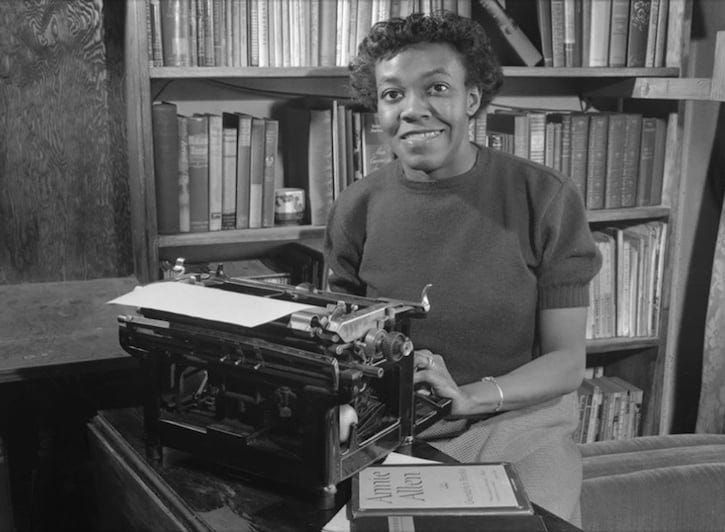
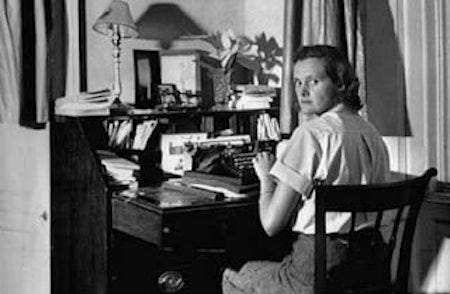
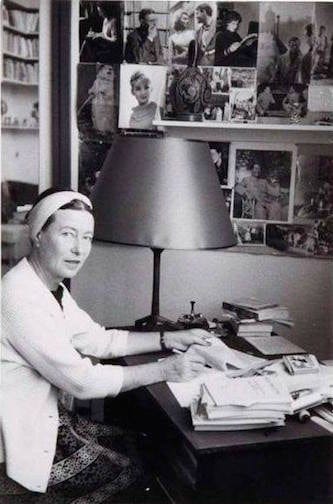
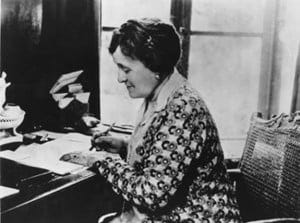
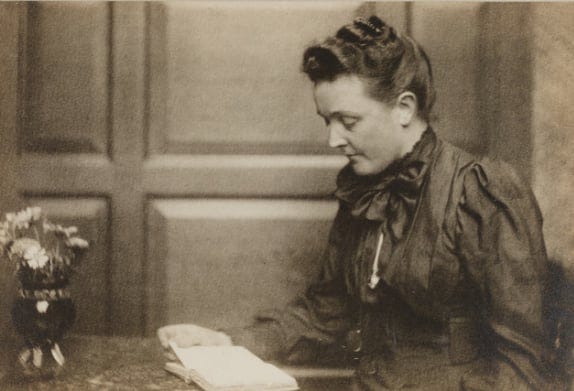
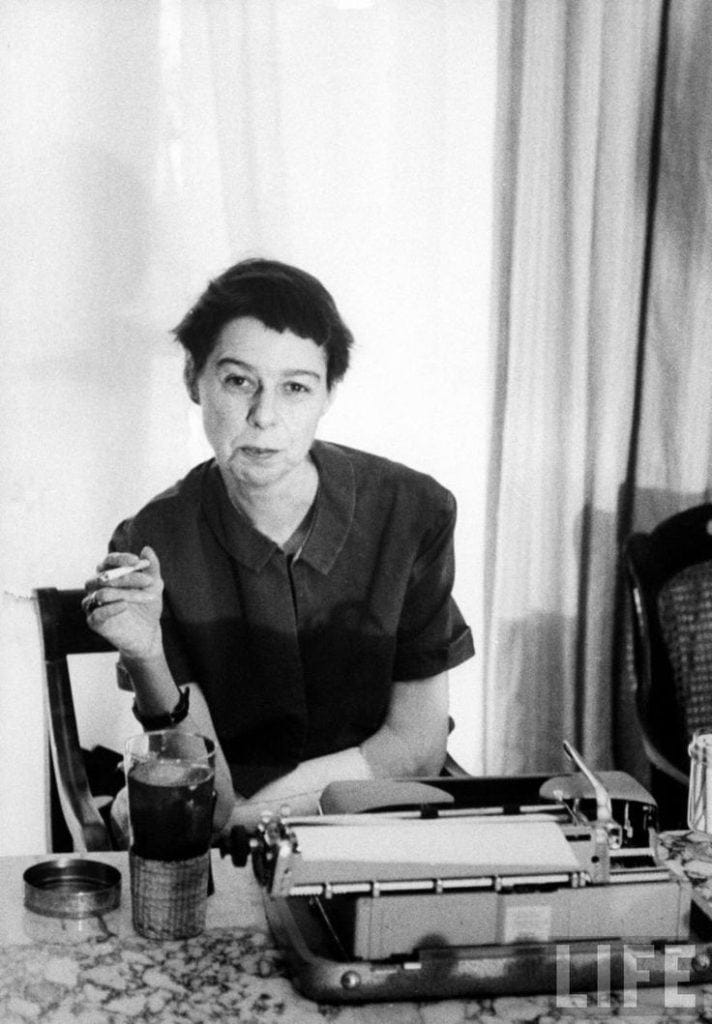
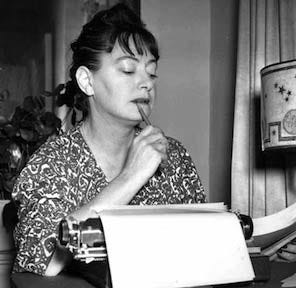

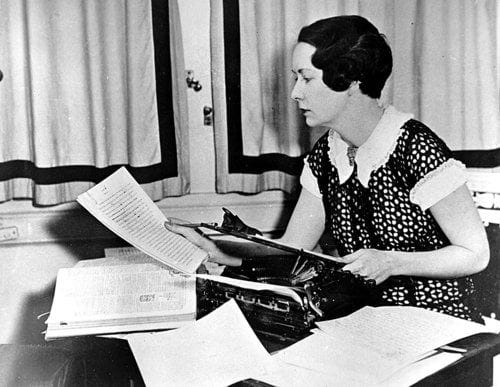
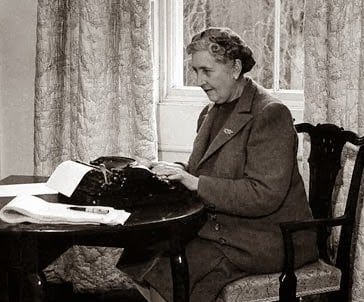
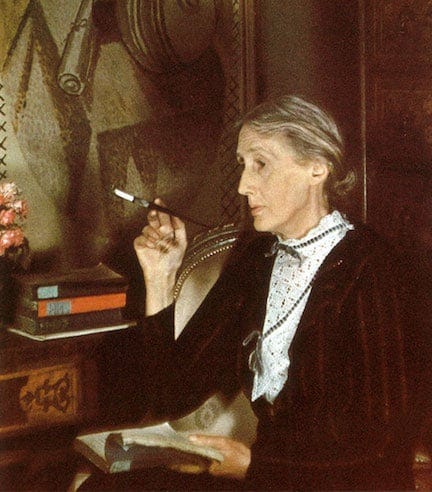
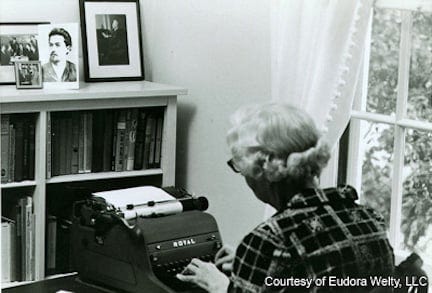
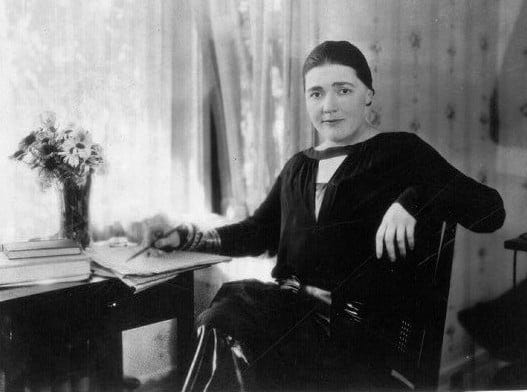
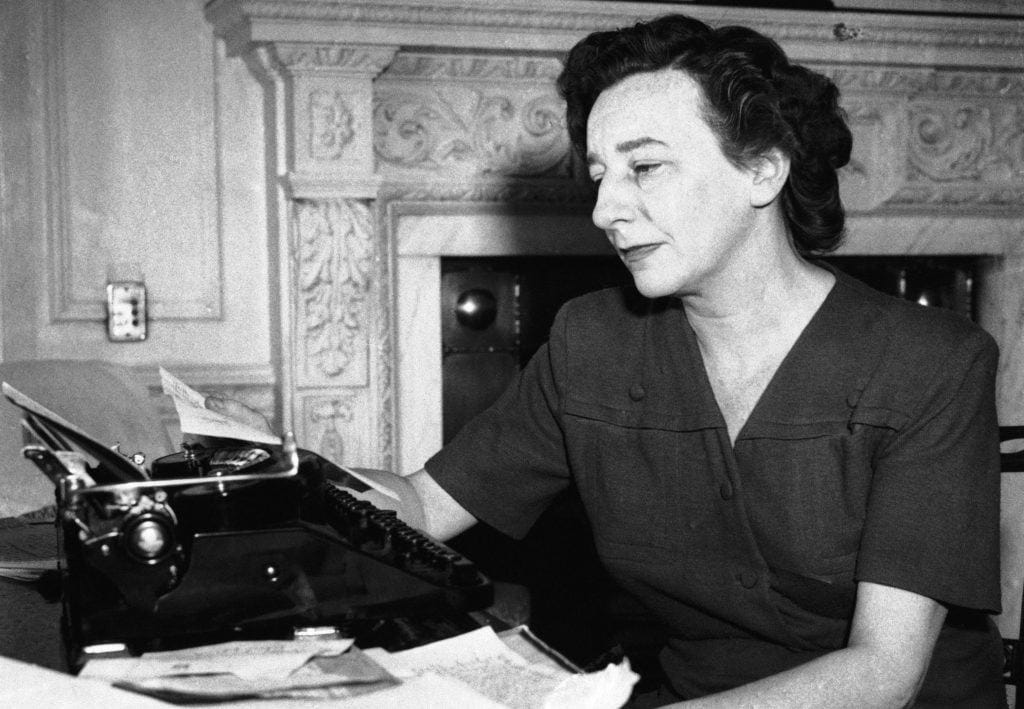
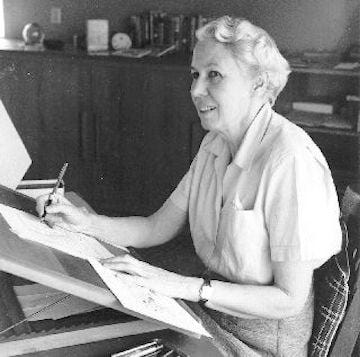
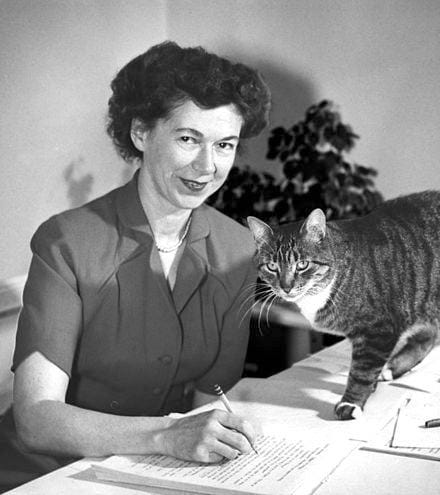
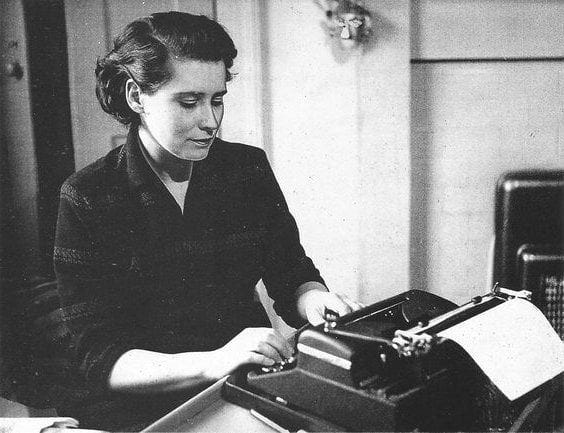
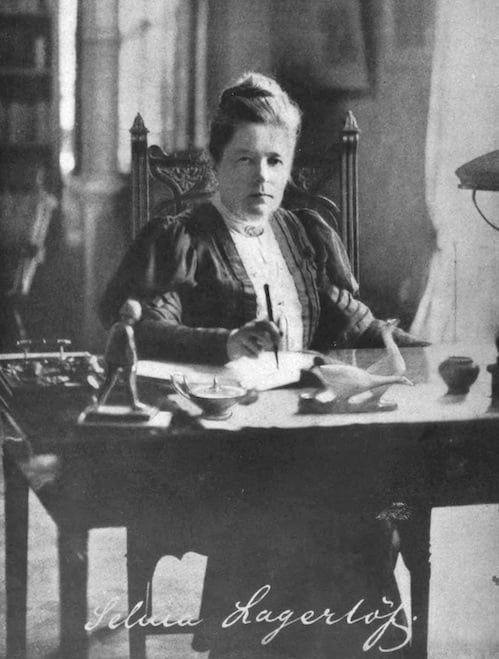
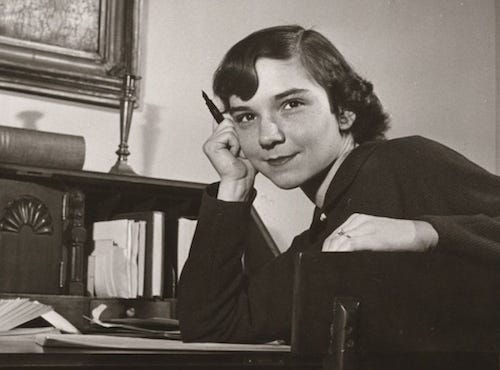
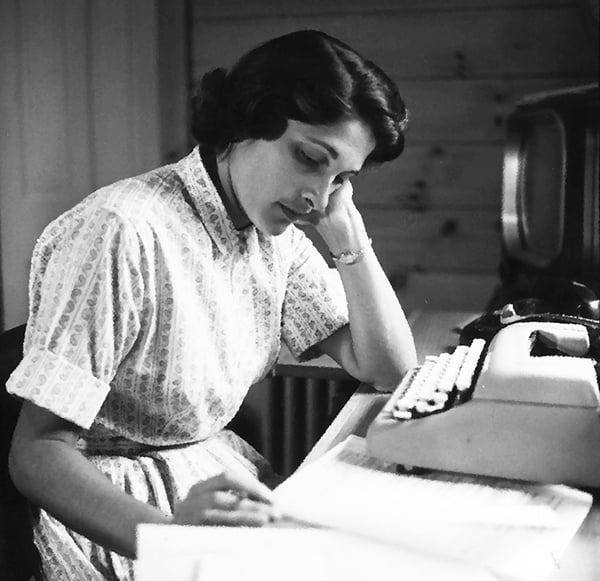
I love this! So wonderful to have them all together.
Excellent photos--thanks for compiling them!